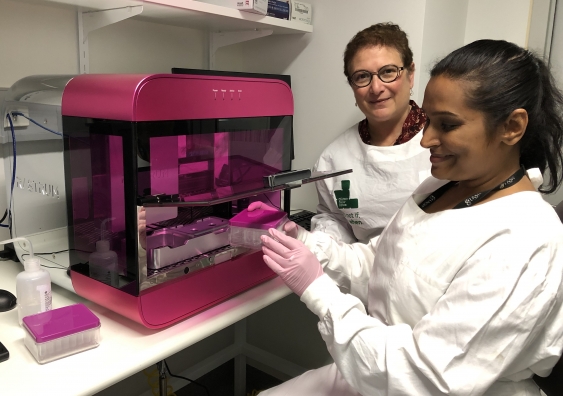Cancer nanotech nurtures sustainable agriculture innovation
2025-03-17T09:18:00+11:00

Dr Cong Vu won the ABARES Science and Innovation Award in 2023 for his nanotechnology for managing drought stress in cotton plants.
Photo: Zeno Rizqi Ramadhan
Cancer drugs and agrichemicals can be powerful, but toxic, tools. Now, ąúĂń˛ĘƱ scientists are applying nanomedicine on a project to make greener agrichemicals more affordable.
Dr Cong Vu was working in the ąúĂń˛ĘƱ labs when he had an idea - that the tiny particles he was designing to target deliver drugs to cancer cells may also have another use.
“I realised, why don’t we use the nanoparticles here to encapsulate pesticides for farmers?”
The cancer treatment he was working with, he noticed, had similar properties to a pesticide.Â
Agrichemicals, like cancer drugs, are powerful tools that can be harmful if released in the wrong place.
“We don’t want to overdose, we don’t want the residue, but at the same time, we need the chemical to reach and treat the problem.”
However, nanoparticles are too expensive for many agribusinesses to develop.Â
In 2021, Dr Vu launched ąúĂń˛ĘƱ startup NanoSoils Bio with the goal of creating cheaper nano-agrochemicals based on nano-medicine insights.
Dr Vu, who is an Adjunct Fellow with ąúĂń˛ĘƱ’s School of Chemistry, says the end goal is creating products that improve pesticide and fungicide delivery, promoting cleaner, more sustainable agriculture.
In addition to pesticides, NanoSoils is also working on a project to create silica nanoparticles that help make cotton crops more resilient to drought.
Last week, the company filed for its first two patents on processes aimed at optimising nanoparticle efficiency.
Nanomedicine grounds growing researchÂ
Dr Vu’s work is grounded in research that explores how the principles of nanoparticle designs, originally developed to fight cancer, can be applied to agriculture.Â
In a , he outlined how design principles from nanomedicine – such as alterations to the size, surface, and material of nanoparticles encapsulating cancer drugs – could be applied to target deliver agrichemicals in plants.Â
His former supervisor, Professor Justin Gooding, who co-authored the article, emphasises the importance of this crossover.
Prof. Gooding notes that nanomedicine has more patents, and more than twice as many publications, as nano-agriculture.Â
“We’ve demonstrated that we can get nanoparticles of different shapes to target diseased cells more effectively than healthy ones. For example, rod-shaped particles tend to be more successful at translocating through cells than spherical ones,” he explains.
Nanomedicine insights, therefore, hold potential to lower the biggest barrier to nano-agrochemical innovation – cost.Â
“Rather than starting from Ground Zero, Dr Vu is leveraging what we already know to address pressing issues in agriculture and for the environment,” he says.
Seeds of inspiration
Dr Vu says his passion for sustainable agriculture stems, in part, from his upbringing in a farming region of Vietnam.
“When pesticides are sprayed, more than 90% of the chemical leaks into the environment,” Dr Vu explains.Â
“We need to control how pesticides are delivered to pests, so that we minimise harm to beneficial species like bees.”
Prof. Gooding highlights that diversity in science plays a crucial role in discovery. “Different experiences bring different perspectives,” he says.Â
“Being part of a university fosters collaboration among people from all backgrounds, creating an environment where new ideas can thrive.”






